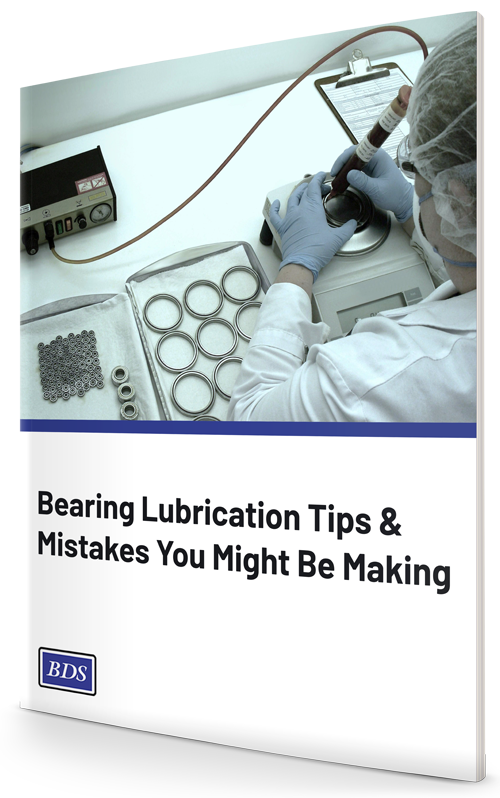Bearing lubrication is vital for preserving the performance and lifespan of rolling element bearings. Lubrication helps separate moving parts relative to one another, such as rollers and raceways or balls, to prevent wear and tear and friction.
Though often viewed as a messy, auxiliary process that has been followed since the Industrial Era to some, bearing lubrication is actually a crucial technology that can make or break your manufacturing processes at your facility.
In fact, the lack of proper bearing lubrication is commonly regarded as one of the most common causes of bearing failure.
Bearing lubrication serves several functions to keep bearings performing their best such as:
- Protecting surfaces from corrosion
- Sealing against contaminants
- Creating a barrier between rolling contact & sliding surfaces
- Providing heat transference
As lubrication experts trusted by major manufacturers, we know finding the correct grease for your bearing application can be a struggle. We can take some of those burdens with our 30+ years of experience and knowledge and be your "go-to" for lubricant optimization.
Because we take extending the life of your bearings enormously, we put together this in-depth guide to discuss the different types of lubricants, the best methods for bearing lubrication, proper procedure for applications, and mistakes you might be making to ensure the long service life of your bearings.
But first, we are starting with the different types of bearing lubrication on the market...
Chapters
CHAPTER 1:
Different Types of Lubricant
There are two types of lubricants on the market: oil and grease.
Selecting the right lubricant for your application depends on a handful of factors.
These include "the type of machine, bearing type, size, temperature, load conditions, speed range, operating conditions (such as vibration and horizontal/vertical orientation of the shaft) and external environment," according to Efficient Plant Magazine.
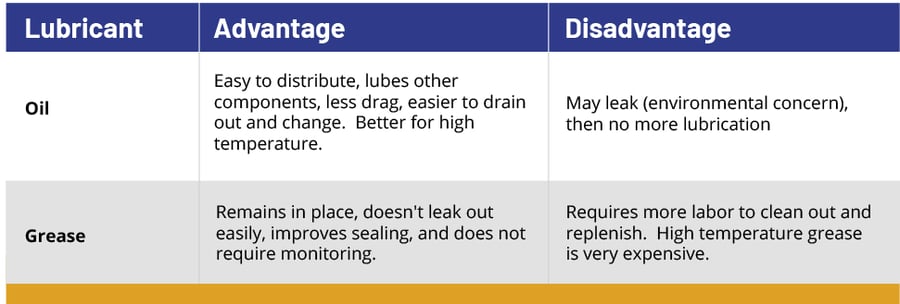
Source: American Roller Bearing Company
In most cases, the best place to start selecting the right lubricant is to follow the bearing manufacturer's recommendations.
However, there are other guidelines to follow when selecting the correct one for the job.
As a general rule, bearings run the coolest and with the least amount of friction when a minimum amount of the lightest-bodied lubricant that will keep the bearing surfaces apart is used, according to knowyourparts.com.
A good example of this is the "splash method," where oil is distributed by wicking or submerging.
Often a heavier lubricant is used in three unique scenarios:
- It's required by operating conditions
- It's called for specifically in the application
- The load is too heavy for the current lubricant
Oil Lubricant:
Oil lubricant is generally used for high speed or high-temperature applications that require heat transfer away from working bearing surfaces. The oils consist of either natural mineral oil (with additives that prevent oxidation and rust) or synthetic oil.
That said, the four types of oils commonly used include petroleum oils, diesters, silicones, and fluorocarbons.
Oil systems for the above types of oils include:
- Bath
- Splash
- Air/ oil mist
- Jet
The base in synthetic oils is usually polyalphaolefins (PAO), polyalkylene glycols (PAG), esters, and silicones for cold and low torque conditions.
Although they are similar, these two types of oils offer unique properties and cannot be interchangeable. Mineral oils are more common than synthetic oils.
Viscosity is one of the key characteristics when specifying the right oil for a bearing. A good rule of thumb: low-viscosity fluids are thinner like water, and high-viscosity fluids are thicker like molasses.
According to Mike Santora at Bearing Tips,
"Engineers express fluid resistance to flow in Saybolt Universal Seconds (SUS) and centistokes (mm2/sec, cSt). The difference in viscosity at different temperatures is the viscosity index (VI)."
The oil's viscosity correlates to the film thickness it can create, which is crucial to the separation of the rolling and sliding parts of a bearing.
Grease Lubricant:
While some bearing applications use oil as a lubricant, grease is the lubricant of choice for 80 to 90 percent of bearings.
Why is grease often a better lubrication option for more options?
Grease adheres to bearing surfaces better than oil, has a longer lifespan, and is less likely to run off or be ejected from rotating parts. [source]
It also can be pre-lubricated, which eliminates the need for an external lubrication system and means less maintenance in the future.
Grease lubricants are made up of three components: additives (usually rust inhibitors), a base oil, and a thickener. When you are selecting a grease lubricant, it's important to note that the viscosity of the base oil (referred to as "base oil viscosity") determines how the lubricating film develops.
According to the National Lubricating Grease Institute (NLGI), the grease's consistency class indicates how the grease will flow and disperse within the bearing.
It's important to remember that regardless of which type of lubricant you chose, it will naturally lose its lubricating properties over time and if not maintained properly with the help of an experienced lubrication service, will eventually lead to bearing failure.
If you want to learn more about what a bearing failure is and the different types you can come across in your facility, download our guide "What Causes Bearing Failures and Preventative Measures You Need to Know."
Still not sure where to start? Here's a handy chart that goes into more detail about common bearing lubricant types & common applications.
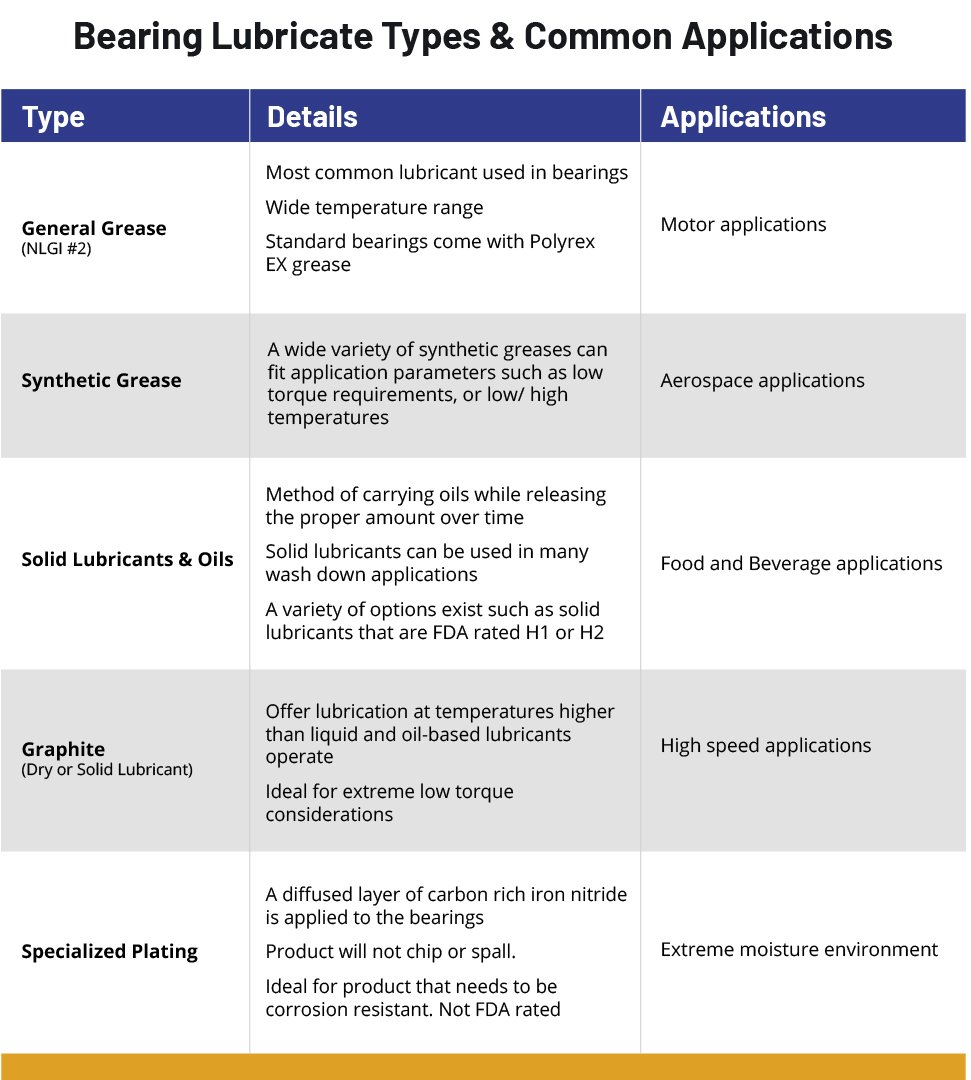
Now, let's move on to the best methods for bearing lubrication you need to keep in mind...
More Resources:
http://www.bearingtips.com/5-best-bearing-lubrication-videos-internet/
CHAPTER 2
Best Methods for Bearing Lubrication
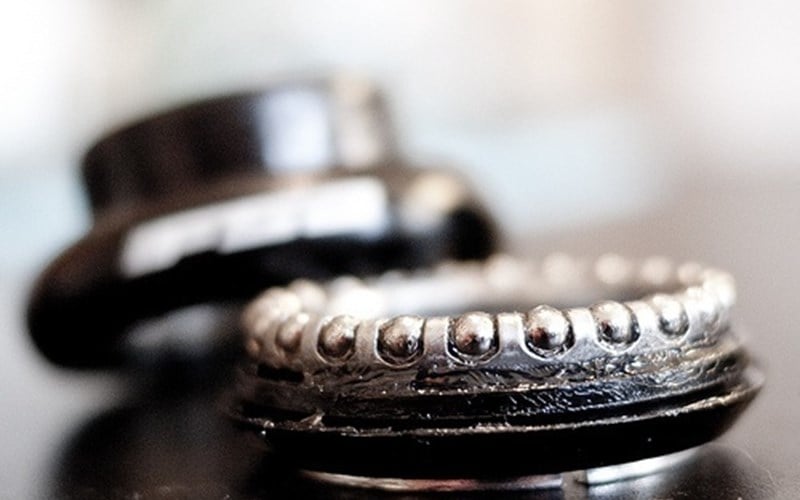
Photo Credit: "Headset-Grease and ball bearings" by schmilblick is licensed under CC BY 2.0
As we've touched on already, bearing lubrication plays a critical role in the lifespan and performance of bearings because it helps separate parts moving parts in order to minimize friction and prevent wear.
In addition to providing that separation, it also dissipates frictional heat (which prevents overheating and deterioration of the lubricant) and protects against other known issues like corrosion, moisture, and other contaminants.
Lubricants should have the following ideal characteristics to support a rolling element bearing:
- Provides a barrier against moisture and contaminants
- Compatible with adjacent components
- Non-corrosive
- Stable structure to provide the bearing with long service life
- Maintains a stable viscosity for a range of temperatures
- Good film strength to support loads
Many different methods can be used to apply oils and greases, however, there are four standard methods that are typically used to supply lubrication to bearings.
- Oil drip feed lubrication
- Oil splash feed lubrication
- Oil force feed lubrication
- Grease lubrication
Grease is typically applied with special equipment that deposits the grease between the balls, which forces it inside and around the ball or roller raceway interface. Unlike oil, grease is normally denoted as a percentage (e.g. 30% fill), which represents the actual grease volume compared to the free internal space inside the bearing. [source]
The manufacturer usually applies the oil with special equipment, however the amount added to the bearing is not specified.
Which method is right for your application? Let's find out...
Drip feed lubrication:
Simply put, this method (often called a gravity feed system) "consists of a loosely covered cup or manifold of oil placed above the bearing that meters out oil at a set interval," according to Tech Transfer.
In systems where low loads and low-to-moderate speeds are expected, bearings of this type require small quantities of oil that are applied at regular intervals.
This type of lubrication was applied by hand in the past, but it actually poses risks like over- or under-lubricating. Drip feed lubrication systems are more commonly used for these applications to supply the correct amount of oil at the right intervals.
Splash feed lubrication:
With this type of lubrication, the bearings are spattered with oil by moving parts that are regularly dipped in the lube oil. This method is preferred when rotation is not fast enough to churn up the oil.
A common type of splash feed lubrication is an oil ring system. This type of method reduces bearing operating temperature and is great for applications running at higher speeds and temperatures.
Its only drawback is that it only works for horizontal applications due to the dynamics of the oil ring.
Force feed system:
When operating equipment at heavy loads and high speeds, you need to protect the equipment from high temperatures as a result of fiction by supplying a high flow of oil.
In a force fed lubrication system, an oil pump pressurizes the oil, which is then directed to the rotating component. Examples of systems that use this method include boiler feed pumps, compressors, gearboxes, and turbine generators.
Grease Lubrication:
Since greases are semi-solid lubricants, they are often used when the lubricant needs to stay in one place or stick to a part, and are ideal since they are less maintenance.
They are also used when the component can't be accessed during operation or cannot be lubricated often.
Greases do not leak out as easily as oils, however, since they are so viscous, they cannot be pumped continuously through equipment to remove heat.
Now that we've learned more about the different types of methods you can apply the lubricant, let's dive in to the proper application procedure.
CHAPTER 3
Proper Procedure Tips for Application
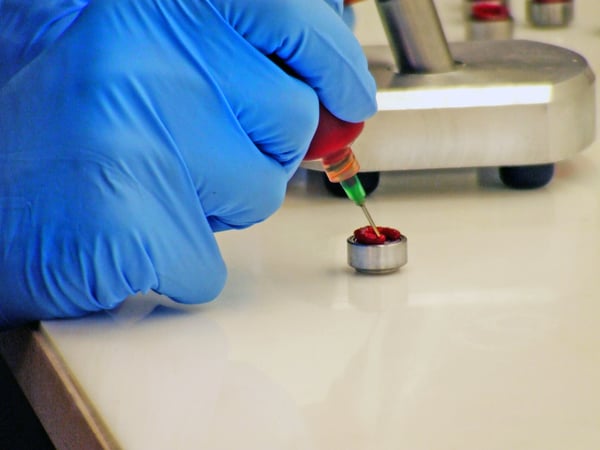
It's no secret that proper lubrication has the largest impact on bearing life. In fact, it's an industry-wide understanding that at least 80% of bearing failures are related to lubrication and contamination issues. [source]
Proper lubrication combats common bearing issues like corrosion, wear, and too much heat.
So how do you know if you're properly lubricating the bearings?
It requires selecting the right lubricant for each application (like we discussed above), applying it correctly, and sticking to a lubrication schedule that meets the equipment's needs.
While it's not a difficult process, it does require following specific guidelines that aren't done properly. As a result, many plants or facilities have inadequate lubrication programs and bearing failures.
Here are some typical causes of failure that are due to lubrication.
Loss of lubricant - if a bearing isn't re-greased with proper intervals and the proper amount of grease, loss of lubricant and lubrication can result and contribute to equipment failure.
Incorrect grease - Make sure to use the correct grease for your application. Some applications need non-extreme pressure (non-EP) or general purpose (GP) grease, while others may require extreme pressure (EP) grease, according to Machinery Lubrication.
Excess lubrication - This occurs when excess grease causes the temperature to increase excessively in a bearing, which normally only happens in open face bearings.
Grease degradation - Common types of grease degradation include oil separation from the grease base, chemical breakdown due to excessive heat, and grease hardening.
Grease incompatibility - It's crucial to stay with the same grease (or a compatible substitute) for the entire life of a bearing. Not all greases are compatible with each other.
The proper application procedure is as important as selecting the right lubricant. The most important areas in applying a lubricant include bearing cleaning, lubricant fill quality, and bearing run-in.
Step 1: Cleaning
In this first step, you need to remove any existing oils, anti-corrosion coatings and greases. This part is essential because the operating life and reliability become more critical and help eliminate any potential incompatibilities.
It's common for bearing companies to provide pre-coated products with an oil film or anti-corrosion coating. As long as the coating has both a micro-thickness and is compatible with your chosen lubricant, then pre-cleaning might not be needed, according to Guide to Proper Bearing Lubrication Procedures by Klüber Lubrication.
Be sure to use a non-residual solvent when cleaning the bearing surfaces to provide the optimum lubrication condition.
Step 2: Ensure Proper Fill Quantity
Proper fill quantity ensures that all contact surfaces have a suitable lubricating film. This step is crucial because, as we've discussed already, over- and under-lubrication are both detrimental to bearing operating life.
Over-lubrication can increase internal friction, which leads to extra heat generation while under-lubrication can lead to wear or lubrication starvation due to contact surfaces not having enough lubrication.
The correct lubricant quantity can be determined by the operating speeds, design, reservoir volume, and the extent of sealing or shielding found in the application.
Step 3: Determine Bearing Free Space
The proper fill quantity of a grease lubricated bearing is frequently specified as a percentage of the bearing's free space, therefore, it's important to determine the free space correctly.
Some methods to determine a bearing's free space are the following...
Published engineering data - Manufacturers may have done the work for you by determining the free space for a number of their "catalog bearings." This means a simple email or phone call to the manufacturer's engineering department can get you the answers you need.
Published reference charts - Manufacturers have also developed generalized bearing free space charts, which help you calculate a specific bearing's free based on the inner diameter and design configuration.
These charts are great reference tools, however, it's essential to keep in mind that the free space information presented in them is generalized.
Rule of thumb equation - This method is one of the more complex ones to determine fill quality, and it's also worth noting that this method is exactly that, a 'rule of thumb' with limited accuracy.
This method works best for applications that operate with low speed or have available lubricant cavities because they don't require an extremely accurate measurement of the free space.
Here is the equation:
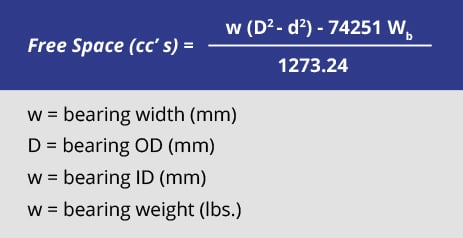
Step 4: Run-In Procedures
Proper run-in procedure is crucial to the bearing and lubricant's performance in the application where high speeds, fill quantities, and specific pre-loads are critical.
According to Guide to Proper Bearing Lubrication Procedures by Klüber Lubrication if done correctly, run-in procedure will:
- Expel the excess grease found in the system
- Orient the lubricating film on each contact surface
- Create a grease collar that delivers oil to the contact zone
- Establish a low equilibrium operating temperature
- Achieve a sealed for life lubrication condition
If a run-in procedure is not performed, over lubrication and/or excessive operating temperatures will occur.
Now that we've gone over applying best practices for bearing lubrication, let's find out the three lubrication mistakes you could be making that are ruining your bearings.
CHAPTER 4
3 Mistakes That Could Be Ruining Your Bearings
Lubrication mistakes can be far-reaching. Common side effects of incorrect lubrication include overheating or excessive wear, which can lead to bearing failure. And that can lead to unexpected downtime and lost revenue at your facility.
Source: SDT Ultrasound Solutions
Let's face it, no one wants to deal with that. So how can you ensure this doesn't happen in your facility?
Here are three common lubrication mistakes you could be making and how to avoid them (or fix them) so you can be confident in your bearing's health.
Mistake 1: Over- and under-lubrication
Adding too much or too little grease is one of the most common mistakes made in our industry.
As we've discussed already, too much grease builds up and eventually causes increased friction and pressure, and that causes excess heat. Too little of grease has the same life-shortening effect on bearings too.
How can you determine that you've added the right amount of grease?
Start by monitoring the bearing's friction level with ultrasound as new grease is applied, one shot at a time (and slowly, of course). [source]
You'll want to listen to the bearing and try to measure the drop in friction as the grease begins to flow into the bearing. Keep note as the decibel level approaches a minimum value and stabilizes, add single shots, and if the decibel level begins to increase even slightly, you can stop because your job is done.
Mistake 2: Lubricating on a schedule instead of a condition
While lubricating a bearing once a week or every month seems like a practical task to do, it's actually causing your bearings more harm than good.
Grease is needed in bearings for one reason— to prevent and reduce friction. If the lubricant is doing its job well, you don't need continue changing it or adding more.
You can monitor, measure, and trend friction levels with ultrasound instead of re-lubricating a bearing on a schedule so you can know exactly when it's the right time to grease, according to Maint World.
Mistake 3: Utilizing a "Listen-Only" Ultrasound Instrument
Simply put, using an ultrasound device that doesn't give measurement feedback to listen to a bearing sounds like a great idea in theory, but it's just going to hurt you in the long run.
Audible feedback alone doesn't work because it's too subjective to pull any real conclusions since no two people hear the same thing. It's also too difficult to remember what a bearing could've sounded like months ago based on memory alone.
An easy fix here is to use an ultrasound with a digital decibel metering. You can use a device that provides multiple condition indicators– if you have that available to you.
There are clear benefits to optimizing your bearing lubrication and avoiding these three mistakes. Doing so will extend the life of your bearings, cut down on grease consumption, and decrease time spent re-lubricating when it's not necessary.
Conclusion
Bearing lubrication, although a simple concept, can have its challenges and requires following specific guidelines to ensure it's done correctly.
Over time, lubricant in a bearing will naturally lose its lubricating properties, but it's still crucial to pay careful attention to the quality of the original lubricant and to take the above steps we've outlined to preserve the bearing, and it's intended lifespan.
Doing so will ensure smooth-sailing for your facility and prevent unplanned downtime, lost revenue, and decreased operating efficiency due to bearing failure that stemmed from lubrication issues.
If you're looking for lubrication services to help you meet your customers' specifications, Bearing and Drive Systems has over 200 types of grease and oil in stock from all of the top companies to meet your needs. Get a quote today and we can take some of your burdens with our 30+ years of experience and knowledge and be your "go-to" for lubricant optimization.




